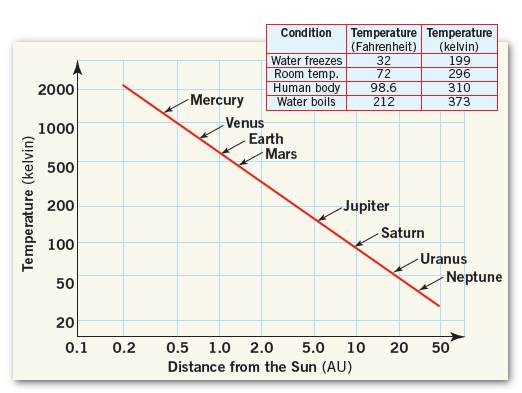Temperature Temperature (Fahrenheit) 32 72 Condition (kelvin) 199 296 Water freezes Room temp. Human body Water boils 2000 98.6 310 -Mercury 212 373 Venus Earth Mars 1000 500 200 Jupiter Saturn 100 - Uranus -Neptune 50 0.1 0.2 0.5 1.0 2.0 5.0 10 20 50 Distance from the Sun (AU) Temperature (kelvin) 20
The graph in the upper right shows the temperatures at various distances
from the Sun during the formation of our solar system. (You
can assume that the planets formed at roughly their current distances
from the Sun, although that may not be strictly true.) Use it to answer
the following:
a. Which planet(s) formed at locations in the solar system where the
temperature was hotter than the boiling point of water?
b. Which planet(s) formed at locations in the solar system where the
temperature was cooler than the freezing point of water?

Trending now
This is a popular solution!
Step by step
Solved in 3 steps

1. What was the temperature at the location of Earth?
2. What was the temperature at the location of Mars?
At temperatures hotter than the freezing point of water, light gases, such as hydrogen helium, likely had too much energy to condense together to form the large, gas giant, Jovian planets.
Over what range of distances from the sun would you expect to find light gases, such as hydrogen and helium to form a Jovian planet?








